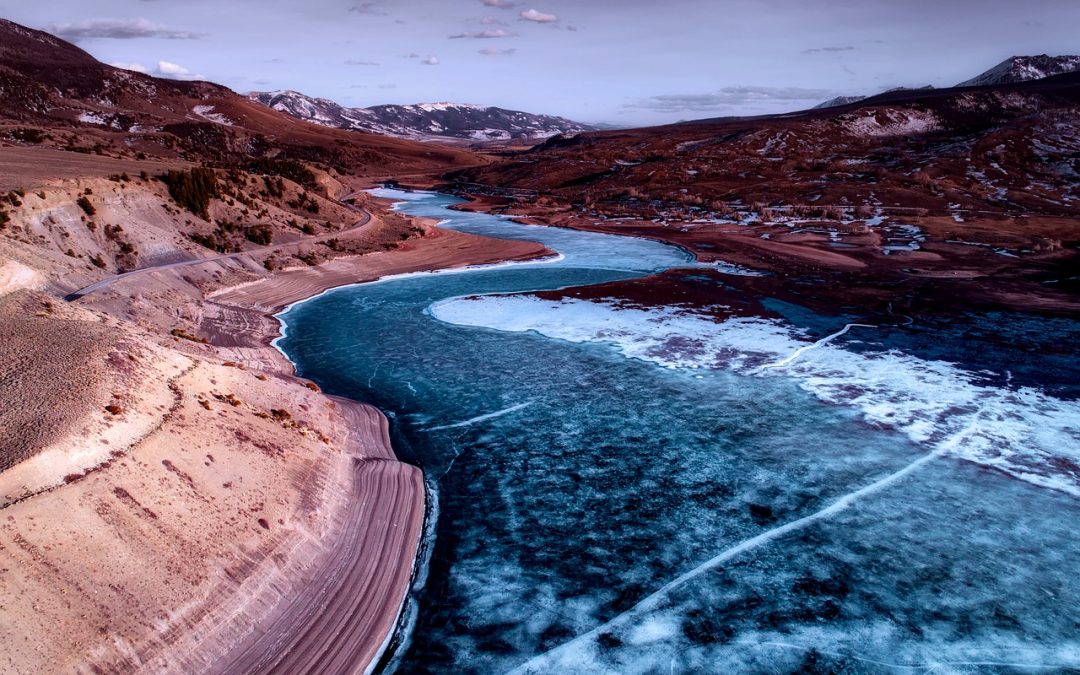This four-part series contrasts the processes behind the Colorado Water Plan with four other recent Western Water Plans: California, Texas, Montana and Oregon.
Colorado’s future is full of uncertainty. Future water supply and demand are particularly difficult to plan for when population and climate projections point in many different directions. To meet the state’s future water needs, the Colorado Water Plan utilizes scenario planning. In using this method, policymakers consider different projections around resources, population, climate, funding and other variables to provide flexibility in planning and responses to future conditions. To understand how Colorado fits into water planning in the West, we summarize how other Western states accommodate potential futures.
What is Colorado Currently Doing?
The Colorado Water Conservation Board, basin roundtables, and the Interbasin Compact Committee (IBCC) analyzed the best available science and stakeholder input to produce five plausible scenarios that represent possible future conditions of water in Colorado in 2050:
- Business as Usual
- Weak Economy
- Cooperative Growth
- Adaptive Innovation
- Hot Growth
The five scenarios are each connected to portfolios, or a series of projects and programs that are appropriate in a given scenario.

This figure shows the visual summaries of the five scenarios discussed in the previous paragraph.
Policymakers identified common actions across scenario portfolios that are applicable across multiple futures. Actions with common benefits across all portfolios can then be prioritized, even if their benefits are realized across longer timescales. This is because decision makers can be more confident that the long term impacts of these common actions will be desirable.
Common actions that meet low water demand projections, regardless of future conditions, while reducing impacts on the environment and agriculture in the near term are identified as “no-and-low-regret” actions. Examples include implementing water reuse strategies or storage projects that support multiple needs.
Actions that are only needed for specific scenarios are known as adaptive strategies. As time goes on, some areas of uncertainty become more certain; the list of appropriate adaptive strategies gets shorter. Decisionmakers can then reevaluate their options and implement the best strategies.
So what elements are considered in crafting these future scenarios? In Colorado’s water planning process, nine drivers comprised the variable elements of these five scenarios:
- Population/Economic Growth
- Social/Environmental Values
- Climate Change/Water Supply Availability
- Urban Land Use/Urban Growth Patterns
- Energy Economics/Water Demand
- Level of Regulatory Oversight/Constraint
- Agricultural Economics/ Water Demand
- Municipal and Industrial Water Demands
- Availability of Water-Efficient Technologies
These drivers reflect the different key elements and values in Colorado water planning.
Another way Colorado enhances its flexibility and adaptability in water management is through developing alternative water supply portfolios, which propose new supplies of water, including reuse. The Interbasin Compact Committee (IBCC) compiled water supply portfolios representative of basin perspectives to address variable future water demands. They selected 10 portfolios that effectively respond to low-, mid- and high-range projections of water demands. Five of these portfolios were matched with one of the five plausible scenarios based on how well the portfolios met projected needs. The other 5 remain as a reference point.
How Are Colorado’s Neighbor States Addressing Uncertainty?
Other Western states are being creative about future planning too. Of the states discussed in this series, Colorado uses regional projections to inform statewide scenarios, Montana and California employ regional scenarios, Oregon scenarios are at the statewide scale, and Texas utilizes statewide projections based on the drought of record.
Montana
Montana’s Water Plan references two scenarios centered around irrigation development: historic development and full development. Historic and future climate scenarios were modeled for each of the four major river basins.
California
The California 2018 Water Plan Update incorporates funding scenarios, which offer recommendations based on possible combinations of future funding sources. California also issues an assumptions and estimates report a year before the final plan is published. This discussion of uncertainty and scenario planning is located in a companion document to the 2018 Update, “Future Water Scenarios” (in preparation), which incorporates and analyzes discussions of uncertainty regarding climate, growth and land use. For the 2013 Update, the state evaluated nine alternative growth scenarios, which considered population and development density, against six global climate models.
Oregon
In Oregon’s water planning documents, five scenarios were developed to forecast future agricultural water demand, featuring different combinations of potential temperature and precipitation regimes. Demand projections are calculated by county and by administrative basin; these projections are superimposed on maps of the state. The state intends to develop tools that quantitatively analyze future scenarios in order to support decision makers’ choices about project investments.
Texas
In Texas, planning strategies are accompanied by alternatives that can be substituted for initial strategies when conditions change. In particular, Texas’s alternative strategies consider regulatory and technological changes.
Adapting to Uncertain Futures
Scenario planning is an effective tool for helping decision makers understand and plan for an array of possible futures. In the five states considered in this series, each applies scenario planning in a way that suits the state’s evolving water needs. Clearly, a lot of resources are necessary to develop scenario planning, let alone whole water plans.
This is our final post in the series contrasting Western state water plans. Thanks for joining us as we explored differences and similarities across regional engagement processes, modeling methodologies, and uncertainty incorporation. Each of these Western states is grappling with uncertainty related to population and economic growth, as well as a changing climate. Across Western state water plans, we observed trends including an emphasis on regional coordination and engagement; investigating novel strategies for regional engagement and water projects; and a push to make planning documents and data sources available on user-friendly and interactive webpages. Each of these Western states is unique in terms of hydrology, policy, and population growth. These planning processes set the stage for a future of adaptive water management in a changing West.
Read our full Western Water Plans series with posts:
“How does the Colorado Water Plan compare to our neighbors”
“How do Western states incorporate regional engagement into water resource planning”
“Uncertain about uncertainty”
“How do Western states plan for uncertain futures in water policy”
 Jakki Davison is pursuing a Masters in Environmental Policy at the University of Colorado at Boulder. She is interested in politics and international affairs. She holds a B.A. in English from the University of Texas at Austin.
Jakki Davison is pursuing a Masters in Environmental Policy at the University of Colorado at Boulder. She is interested in politics and international affairs. She holds a B.A. in English from the University of Texas at Austin.


 Print
Print